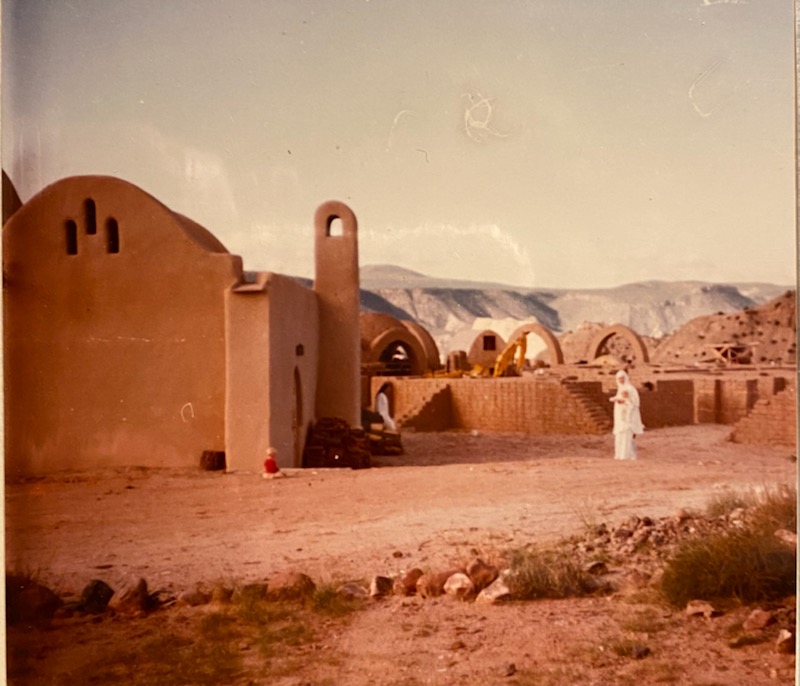Listen to the mud episode of Unsettled podcast from Santa Fe Art Institute created by Dr. Alicia Inez Guzmán & Diego Medina. Listen to artists Joanna Keane Lopez and Christine Howard Sandoval reflect on the the complex history, traditions, politics, and meanings embedded within the act of building with mud in New Mexico and California.
Glendale Childcare Center
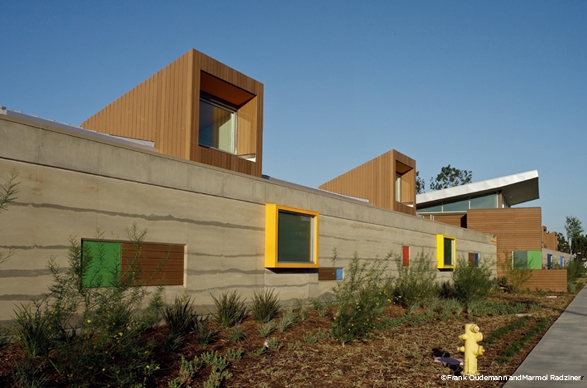
Located in Glendale, California, the 23,000 square-foot childcare facility, designed by Marmol Radziner, accommodates 236 children between infant and Pre-K ages. The complex is the first LEED Gold Certified building in Glendale, and is the largest rammed earth building in Southern California. The sustainable strategies incorporated into the building, including photovoltaic panel canopies and structural rammed earth walls, are key visual and tactile elements in the design, emphasizing the facility as both a learning environment and an educational tool.
Desert Dream
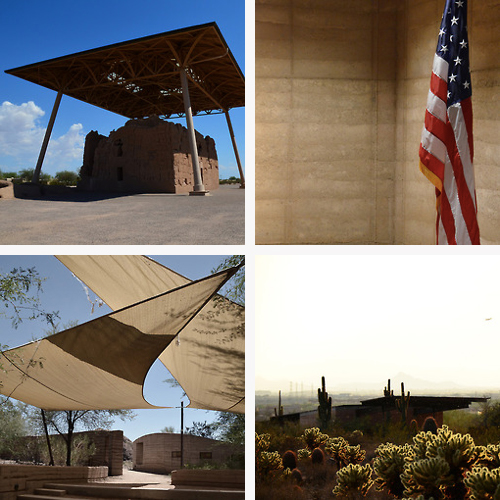
Desert Dream is a website by architect and recent CRAterre graduate, Hugo Gasnier, a recipient of The Delano and Aldrich/Emerson Fellowship, documenting his journey across the expansive desert regions of the United States to study contemporary earthen architecture.
Saint Bartholomew’s Chapel
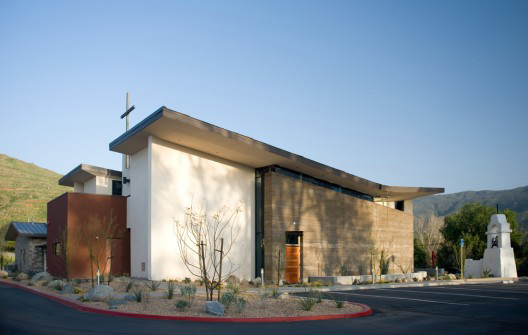
Saint Bartholomew’s Chapel, by Kevin deFreitas Architects, is located in the picturesque back country of northern San Diego County at the base of Mt. Palomar alongside the San Luis Rey River. A very small and intimate historic chapel was destroyed by wild fires that ravaged the reservation in late 2007 and only the original adobe bell tower survived, which became the anchor element in the redesign planning of the new church. The needs of the current congregation and community had changed quite a bit in the past 100 years. Though the fire destroyed a building that hosted many, many important events and celebrations, it also presented a “blank slate” opportunity to update the facility, primarily by doubling the seating capacity.
Juana Briones House Demolished
The Juana Briones House, a rare example of encajonado construction, parts of which were built in 1844, has been completely torn down by property owner Jaim Nulman, who fought off historic preservationists, latino activists, and descendants of Briones for years. Feminists joined in the struggle for the home’s preservation as well. Jeanne McDonnell, biographer of Juana Briones, stated that historic buildings associated with women are more likely to be demolished than those associated with men.
Renovations and Repairs at Church of the Holy Cross
Church of the Holy Cross
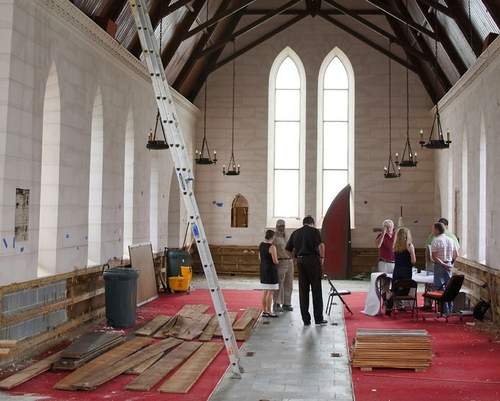
Interior
After years of waiting, the historic rammed earth Episcopal Church of the Holy Cross in Stateburg is ready to begin renovations. The church, built between 1850 and 1852, was declared a national landmark in 1978. The building is of particular historic significance because of its “unusual construction of rammed earth known as pise de terre.”
Bardessono
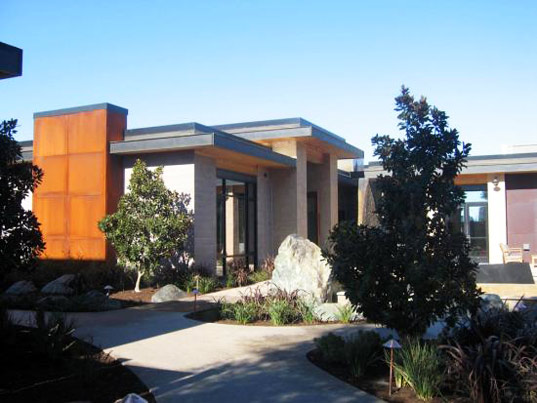
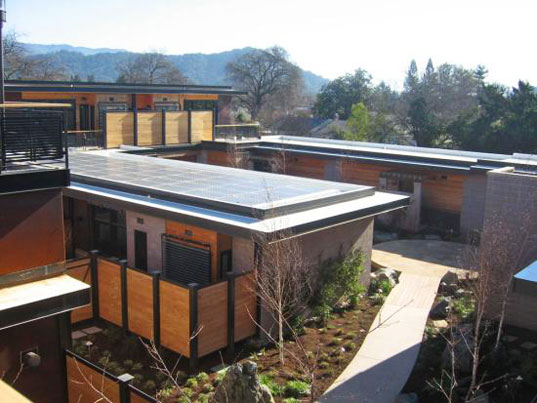
The Bardessono eco-resort is Napa Valley’s newest luxury hotel. It a host of green building strategies including rammed earth walls, grey and black water treatment systems, and solar and geothermal energy. Completed just seven weeks ago by eco-developer Phil Sherburne and architect Ron Mitchell, the project is currently pursuing LEED platinum certification. [ via Inhabit.com ]
Napa Valley Rammed Earth House
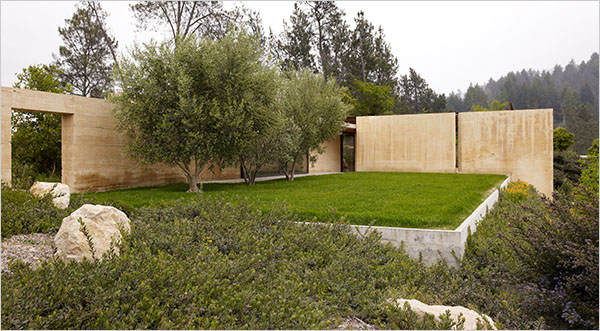
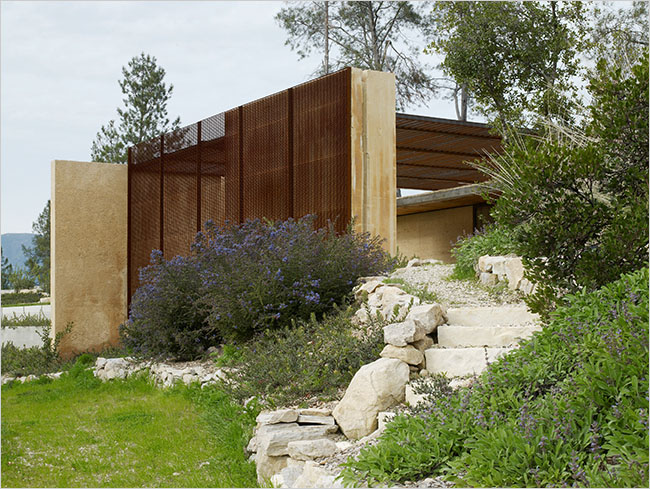
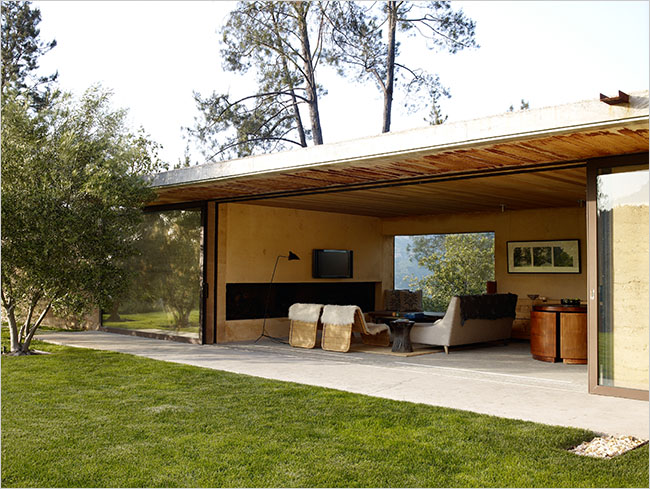
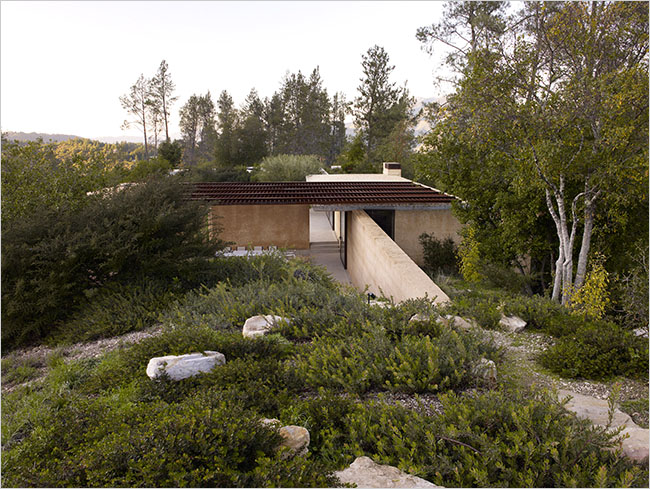
Photos: Marion Brenner for The New York Times
THE first clue that a visitor to Tatwina and Richard Lee’s hilltop property is headed somewhere unusual is the approach, as it’s known in landscape design parlance. The nearly half-mile of dusty road winds dramatically up an intermediary ridge of the Diamond Mountains above Napa Valley. Each turn raises the expectation that the house will soon appear, as houses normally do, but even when the gravel parking area at the top is finally reached, there’s no sign of a house or a garden, just a simple path of crushed stone edged with mounds of green-gray Sonoma sage and California lilac. This, it turns out, leads over a rise to a low, rammed-earth house hidden on the other side.
The house — really a line of four one-story buildings made of earth, concrete and steel and designed by Steven Harris Architects— sits in the depression between two knolls on a narrow, rocky peninsula, with steep, pine-covered hills swooping down on three sides to vineyards famous for their cabernet sauvignon.
Architect Nader Khalili Memorial
On Saturday March 29th, from 11:00 am throughout the afternoon, Nader Khalili’s surviving family and students invite all who were his friends and supporters to remember and celebrate his life, words and works, at his Cal-Earth Institute, in Hesperia, California, amongst his visionary architecture. Rather than flowers, please send a contribution to a charity which helps the poor and refugees, in his name. [ directions | previously ]
Nader Khalili Dies at 72
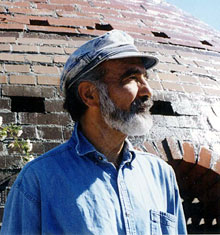
Nader Khalili
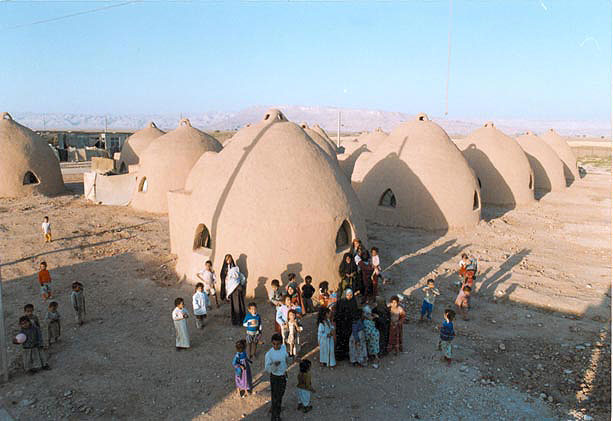
Superadobe Structure
Iranian-born architect and author, Nader Khalili, passed away at the age of 72 on Wednesday, March 5th, 2008. Khalili was known for his invention of an Earthbag Construction technique called Super Adobe, which use sand bags, mud and barbed wire to build emergency shelters in areas affected by natural and man-made disasters. His books, Ceramic Houses and Earth Architecture: How to Build Your Own and Racing Alone document his life of searching for a method to fire mud houses and turn them to stone by firing and glazing an entire building after it is constructed from clay-earth on site. He is the founder of The California Institute of Earth Art and Architecture, whose scope spans technical innovations published by NASA for lunar base construction, to design and development of housing for the world’s homeless for the United Nations.

